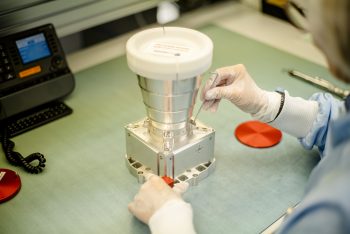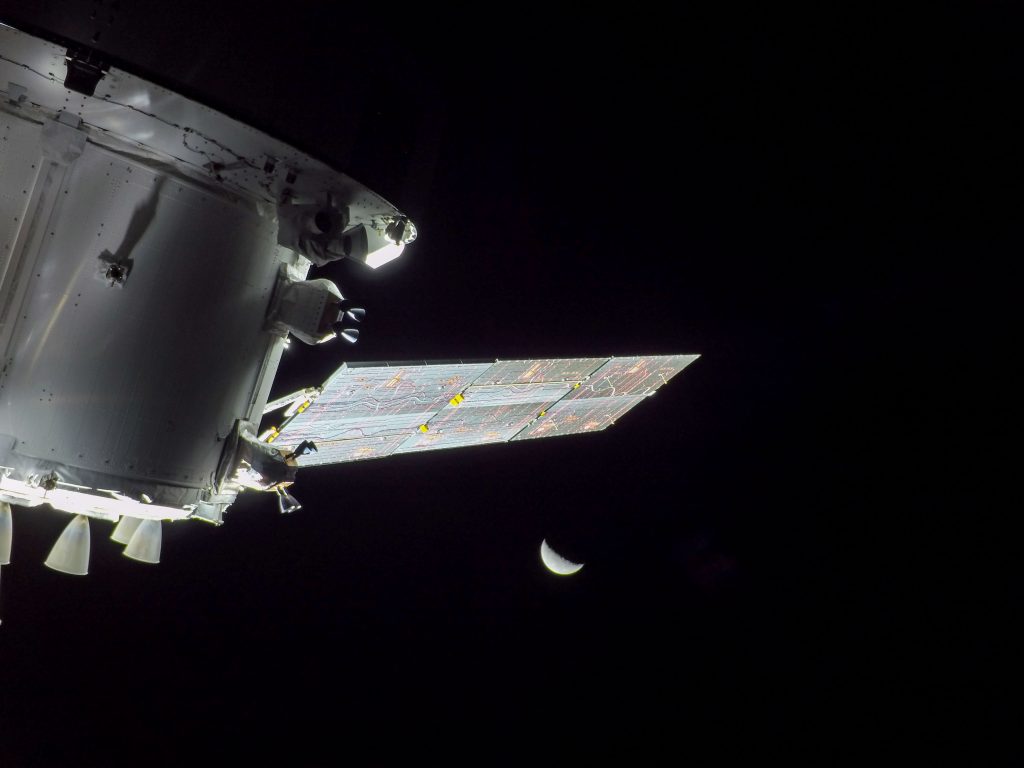
Flight controllers performed a third in a series of planned star tracker development flight tests relative to the Sun on 24 November, with a fourth planned for the next day, flight day ten. Star trackers are a navigation tool that measure the positions of stars to help the spacecraft determine its orientation, using a technique similar to how seafarers navigated using the stars. In the first three flight days, engineers evaluated initial data to understand star tracker readings correlated to thruster firings.
Orion completed its sixth outbound trajectory correction burn at 22:52 CET (21:52 GMT), firing the European Service Module’s auxiliary engines for 17 seconds to propel the spacecraft at 2.7 m/s. This is the final trajectory correction before firing up the engines 24 hours later to enter the lunar distant retrograde orbit. When in lunar orbit, Orion will perform three orbital maintenance burns to keep the spacecraft on course.
Overnight, engineers began a 24-hour test of the reaction control system engines to evaluate engine performance for standard and non-standard thruster configurations. This test will provide data to inform procedures and ensure that the reaction control thrusters can control Orion’s orientation in an alternate configuration if there is an issue with the primary configuration.
Watch the Orion live stream and you might see some of the European Service Module thrusters firing as the spacecraft heads towards lunar orbit:
Orion and the European Service Module will enter their distant retrograde orbit around the Moon at 22:52 CET (21:52 GMT) on 25 November. The orbit is “distant” in the sense that it’s at a high altitude around 80 500 km from the surface of the Moon. Due to the distance, the orbit is so large that it will take the spacecraft six days to complete half of a revolution around the Moon before exiting the orbit for the return journey back to Earth.

NASA Television coverage of the distant retrograde orbit insertion burn, will start at 22:30 CET (21:30 GMT) on November 25, 22 minutes before the burn takes place.
Just after 20:42 CET (19:42 GMT) on 24 November, Orion was traveling 358 872 km from Earth and 89832 km from the Moon, cruising at 4200 km/h.


 Automated Transfer Vehicle page
Automated Transfer Vehicle page ATV blog archive
ATV blog archive
Discussion: no comments